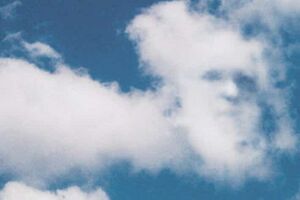Pattern recognition enhancement
Pattern recognition enhancement can be described as an increase in a person's ability to recognize significant imagery (usually faces) within vague stimuli.

This innate ability which human beings possess in everyday life is referred to by the scientific literature as pareidolia and is very well documented. Common examples of this include spotting faces in everyday objects or perhaps viewing clouds as fantastical objects.
During the experience of this effect pareidolia can become significantly more intense and pronounced. For example, scenery may look remarkably like people or objects, every single leaf on a tree may look like many tiny green faces, or clouds might appear to be easily recognizable as fantastical objects, all without any visual alterations actually taking place.
Image examples
Psychoactive substances
Compounds within our psychoactive substance index which may cause this effect include:
- 1B-LSD
- 1P-ETH-LAD
- 1P-LSD
- 1V-LSD
- 1cP-AL-LAD
- 1cP-LSD
- 1cP-MiPLA
- 25B-NBOH
- 25B-NBOMe
- 25C-NBOH
- 25C-NBOMe
- 25D-NBOMe
- 25E-NBOH
- 25I-NBOH
- 25I-NBOMe
- 25N-NBOMe
- 2C-B
- 2C-B-FLY
- 2C-C
- 2C-D
- 2C-E
- 2C-I
- 2C-P
- 2C-T
- 2C-T-2
- 2C-T-21
- 2C-T-7
- 3-MMC
- 3C-E
- 3C-P
- 4-AcO-DET
- 4-AcO-DMT
- 4-AcO-MET
- 4-AcO-MiPT
- 4-FA
- 4-HO-DET
- 4-HO-DPT
- 4-HO-DiPT
- 4-HO-EPT
- 4-HO-MET
- 4-HO-MPT
- 4-HO-MiPT
- 5-MeO-DALT
- 5-MeO-DiBF
- 5-MeO-DiPT
- 5-MeO-MiPT
- 6-APB
- 6-APDB
- AL-LAD
- ALD-52
Psychoactive substances
Anecdotal reports which describe this effect within our experience index include:
- Experience: 15mg 2C-B (oral) - A pleasant low-dose evening with Nexus
- Experience: 200µg 1P-LSD (sublingual) + 12mg CBD - The Vortex of Empathy
- Experience: 22mg 2C-B (oral) / 100ug 1P-LSD (sublingual) - My first time tripping alone (2 days in a row)
- Experience: 25mg 2C-E (oral) - A mindblowing experience
- Experience: 80mg EPT - Slight improvement
- Experience:0.75g MDMA - Possibly some MDA through metabolisation?
- Experience:1000 Morning Glory seeds - Rediscovering the Self
- Experience:120µg LSD - First Bad Acid Trip, Psychosis
- Experience:150mg MDMA + 20mg 2C-B - I designed it this way myself
- Experience:2.5g Psilocybe Cubensis B+ strain - epiphany of nondualistic reality
- Experience:20mg (insufflated) - permanent all-encompassing states of unity and interconnectedness
- Experience:20mg - I looked up and saw an angry god-like figure made of clouds glaring down at me
- Experience:250 seeds - Harsh body load
- Experience:25mg - A labyrinth of organs and a storybook walk
- Experience:2C-P (approx. 35mg) - Asymmetrical Terror and the Geometric Sea
- Experience:2mg 25C-NBOMe - Experimental trip to test personal limits of NBOMes
- Experience:3 Grams of Mushrooms - Reset on my Life, Experiencing Satori and the Cosmic Perspective
- Experience:3.5g psilocybe cubensis - Relinquishing of Material Chains/Fear and Desolation
- Experience:300µg LSD - Togetherness and the Silent Dusk
- Experience:4-HO-DET (20 mg, oral) - Tripping for my birthday
- Experience:4.5g - The Grand Introduction to Beauty and Fear
- Experience:40mg - Brothermind and the Forest's Hand
- Experience:5g Mushrooms - Failed attempt at a Terence Mckenna style trip.
- Experience:BK-2C-B - Various experiences
- Experience:LSD (230 ug) - An amazing adventure by vikilikepsych
- Experience:Mushrooms and Snuff Films -- Trip Report (3.5 grams)
- Experience:Unknown dosage / 1 tab DOC - Psychedelia Turned Into Stimulant Psychosis
- Experience:Unknown dosage / 3 tabs - Ego death and a total break through in the snow
- Experience:~150mg MDA(oral) - a case of mistaken identity